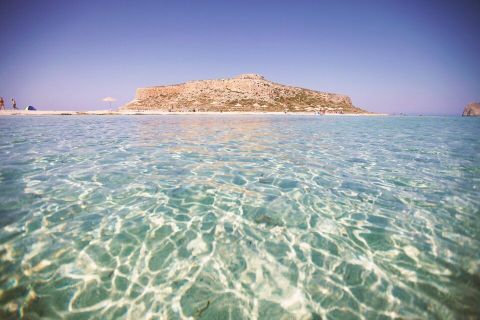Heraklion Malia Village
• General info • Things to do & See • Tours & Activities • Map • Members Photos (23) • Write a review!
Things to See & Do in Malia Village
Sightseeing
Top Activities & Tours in Malia Village
-
Full Day Gramvousa and Balos Tour
Book nowfrom € 40.00Category: Day Trips, Island15 hours MapDiscover one of the most beautiful beaches in Greece on a fantastic cruise to the most western part of Crete. Stop at the island of Gramvousa, where you can see hundreds of birds and plant species. Go to the lagoon at Balos and swim.
-
Quad safari tour with lunch hotel pickup and dropoff
Book nowfrom € 77.40Category: Activities, Day Trips6 hours MapEnjoy a quad adventure and experience Crete's beautiful scenery by visiting Paschaligo Forest, Neapolis Village, Sisi Village, and more.
Malia Village Map
Photos by Greeka Members
More about Malia
In contrast to the new town, the old town might deceive with its modern-looking center, but just one street across it reveals itself as rather picturesque, home to many densely-packed old stone houses separated by paved alleyways too narrow for modern vehicles. The old town is surrounded by farmland in all directions and is essentially only connected to the new town by one main road cutting through the fields. This is Dimokratias Street, which is lined with nightclubs, forming one of Greece’s most intense “party miles”.
The crowning glory of Malia is, of course, its world-renowned beach. One of Crete’s busiest beaches, its fine, blond sands and clear waters are the driving force behind the town’s rapid growth in recent decades. Malia Beach is perfectly suited to handle the load of so many swimmers, as apart from its countless sunbeds and umbrellas, bars and cafes, there is also an impressive amount of water sports facilities, as well as volleyball nets to add variety to seaside athleticism.
Across the sea is an islet known as Afentis Christos (Lord Christ), as it is home to a small church consecrated to the Transfiguration of Christ. This island was just centuries ago connected to the land, and can still easily be reached, either with a pedalo or just by swimming for those more experienced.
To the northeast of Malia lies Agio Pnevma, the local marina, and even further in the same direction is the Malia wetland. The beaches that form here are much less crowded than the main beach at Malia, and offer a quieter experience, while two enormous clay amphorae have been placed on platforms along the coast, providing a cheeky landmark. The wetland, Crete’s largest expanse covered with reeds, serves as an important nature reserve and is a popular bird-watching spot.
Malia is also home to one of the most important archaeological sites in Crete, just 3 kilometers to the east, which includes the third-largest Minoan palace, but also many surrounding neighborhoods dating to the same period, providing invaluable information on the daily life of the people who lived here 4500 years ago. To the north of this main site is the necropolis, where some of Minoan Crete’s most recognizable artifacts were unearthed.
The archaeological site and the wetland are protected, keeping the tourist accommodations at bay and presenting one of the last places in Crete where the sea daffodil still grows.
Finally, Malia’s churches are a wonderful collection of intriguing landmarks. Apart from the church on the islet of the Lord Christ, there is also the church of Panagia Galatiani which is said to have been built with mortar using local goat’s milk instead of water. In addition, the Chapel of St. George is a 13th-century structure that bears frescos that date back at least 400 years; although they have been somewhat defaced and half also suffered natural weathering, their colors are still vibrant and they are a powerful expression of Orthodox hagiography.
Further to the east is the monastery of Saint George Selinari, where the cream-colored walls are graced by red detailing, creating an enchanting combination that bears a resemblance to Knossos. This monastery also includes a large, beautiful garden for visitors to wind down in, after paying their respects.












